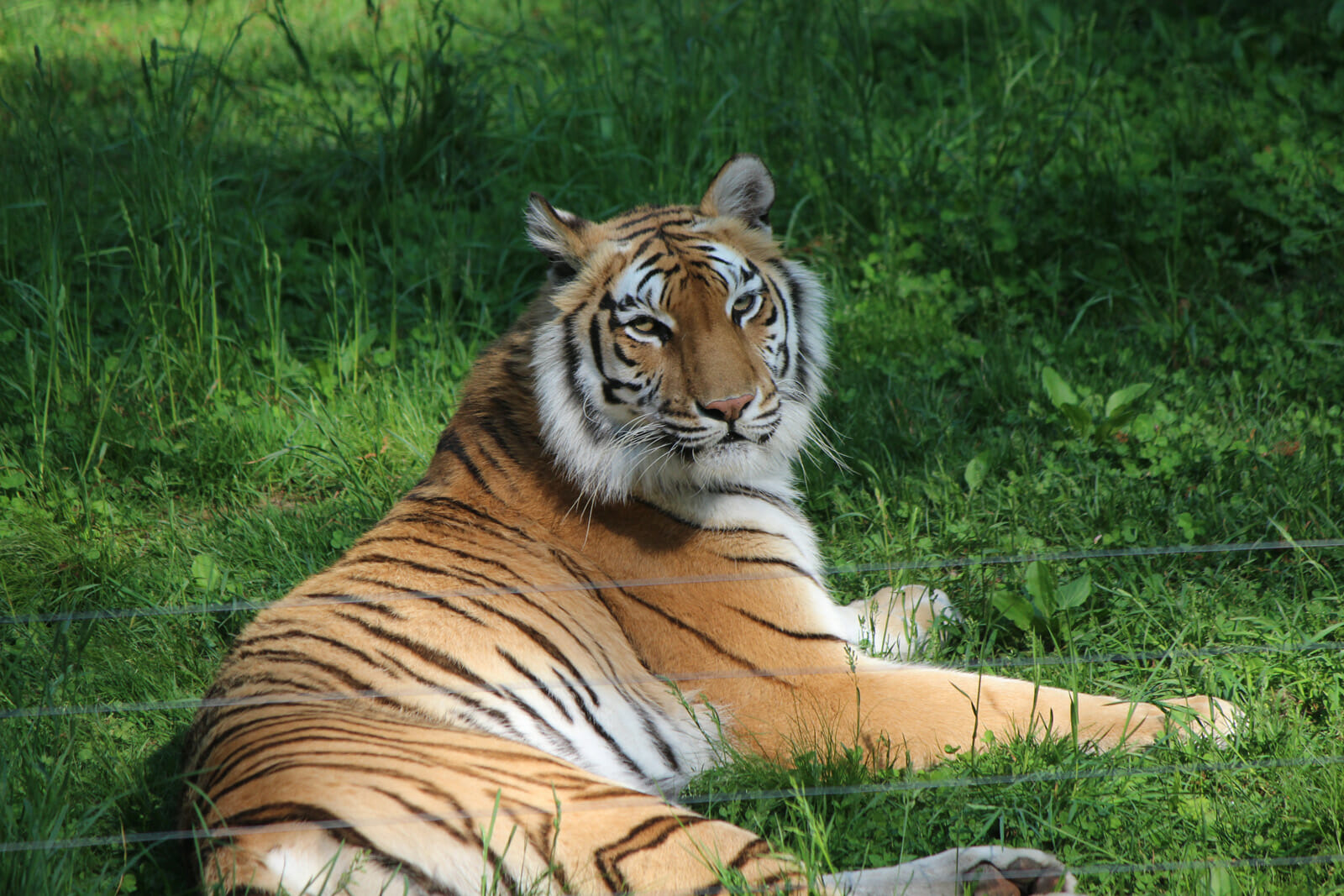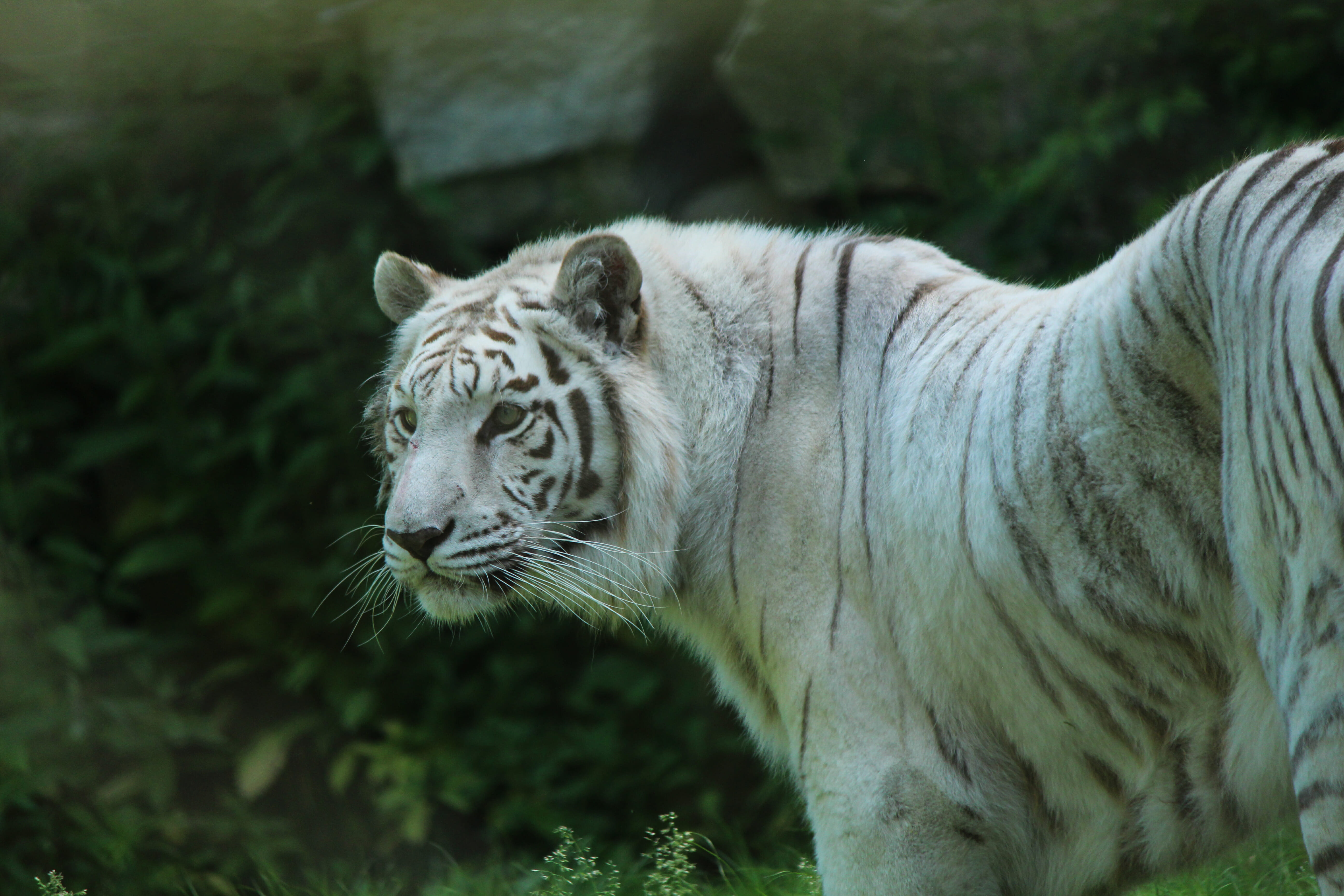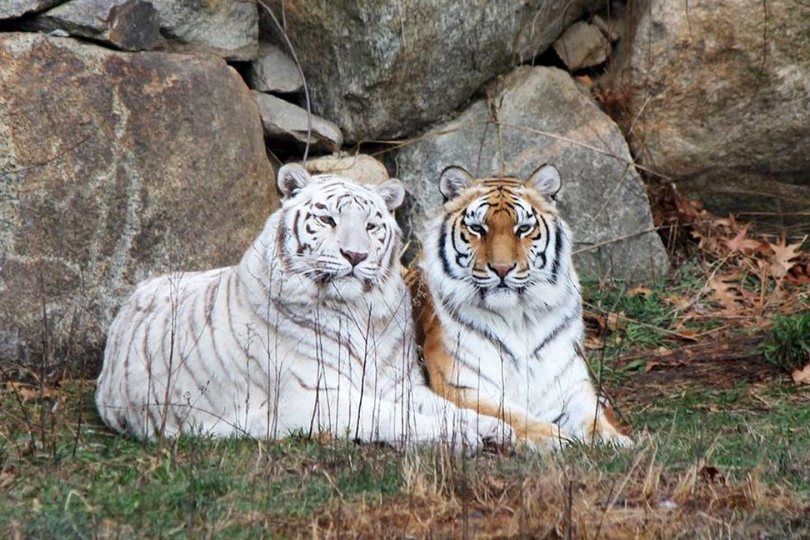Bengal Tiger
Panthera tigris tigris
Class: Mammalia Order: Carnivora Family: Felidae
Size
Weight (Males): 400-500 lbs
Weight (Females): 250-350 lbs
Diet
Tigers are carnivores and prey on large and medium sized mammals such as water buffalo, deer, and wild pigs.
Lifespan
Lifespan (Wild): 10-16 years
Lifespan (Captivity): 16-20 years
Habitat & Range
Marshlands, rainforests, wet and dry deciduous forests, and grasslands of India, Nepal, Bhutan, Burma
Interesting Facts
Tigers are the largest cat species. There are 9 tiger subspecies, including Bengal tigers, three of which are extinct.
Most cats avoid water, but Bengal tigers actually enjoy getting wet. This is a way to cool off during hot weather. Tigers are strong swimmers and are capable of hunting for prey in the water.
Tigers are solitary in the wild and territorial. They scent mark their territory using urine. Tigers typically avoid contact with humans unless they have been disturbed. Tigers do not generally hunt people unless they sick or their natural prey is no longer available.
White tigers are not albino; the coloration is a result of a recessive gene. This recessive gene is naturally expressed at a very low rate, so white tigers are very rarely found in the wild.



At the Zoo
Southwick’s Zoo is home to two female Bengal Tigers; Kya (orange) and Taj (white). Though they are different colors, they are sisters.
Conservation Status
Endangered
Threats
Bengal tigers are endangered and their numbers in the wild are decreasing. Poaching is one of the major threats to this species. They are also threatened by habitat loss and lack of prey.
